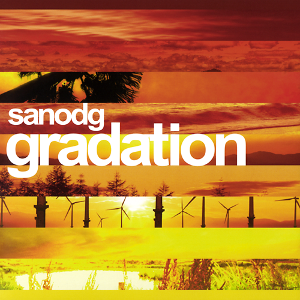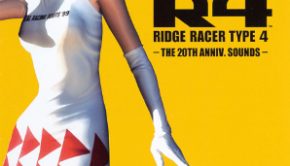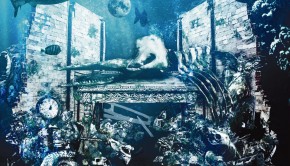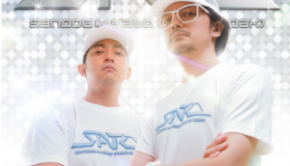gradation
 |
Album Title: gradation |
| Record Label: DETUNE |
|
| Catalog No.: DTSN-0003 |
|
| Release Date: June 27, 2012 |
|
| Purchase: Buy at Amazon Japan |
Overview
gradation is the second solo album released by Nobuyoshi Sano under his DETUNE label. Like Brightness, it features both new original tunes as well as tunes that have been featured on past albums, like the ultra-rare sanodg works and Opening Gambit. How does this album compare to his previous solo effort?
Body
The album opens up with “Hand Your Hand,” a beautiful drum n’ bass style tune featuring bright synthesizer tones, a beautiful melody, and a ton of energy. This tune has been featured as a remix by AJURIKA on a Pinokiti Records release titled Opening Gambit, however, I believe this is the first time the original has ever been released in CD format. His original tune from Opening Gambit, “The Wired Forest” can also be found on this CD release. It features a very club oriented beat. I really like the catchy beat featured throughout the track, but what I find more impressive is the electronic accompaniment in the melody line. It is mellow at times, futuristic at others, and a bit funky during others. Overall, this is a very solid effort by sanodg and is reminiscent of his Ridge Racer tunes. From that same Pinokiti Records release, Sano’s remix of AJURIKA’s “Responsibility” also makes an appearance on the album. It’s an experimental electronic work at times featuring lots of glitchy synthesizer effects, some atmospheric synthesizer, and an almost tribal electronic beat.
There are also a few tunes that are featured previously on the out-of-print album sanodg works. “Leaning Tower” has a very quirky electronic style, but is also reminiscent of styles associated with sanodg. There is a nice dance vibe and a lot of layers that really help build a complex tune, but at the same time, it doesn’t really deviate much from its formula. “Electric Prayer” takes on a more atmospheric approach; however, there is still a steady electronic beat throughout most of the piece that helps move the piece along and helps bring in a bit more of a groovy style into the mix. “Shanghai Discotheque 2001” opens up by listing a variety of old dance clubs from around the world before mentioning the title track. The track itself has a very disco flavor mixed with a bit of an Asian flair. Throughout the track, there is also vocoder based speech that detracts a bit from the piece, but during the chorus it manages to fit in quite nicely with the beat. All in all, it’s a great song, marred slightly by the vocoder usage. The last piece from the sanodg works album is “Jz” and it’s a piece that is a bit on the stranger side. Featuring a nice house style beat, it has a very chaotic sound due to the dissonant effects and short melodic fragments that are incorporated into the piece.
There are also two new pieces, to my knowledge at least, titled “Throw In” and “Double Infinity.” The former has a rich club sound mixed with exotic vocal samples, ethereal synthesizer, and tons of percussion. It really creates an energetic vibe that works with the rest of the album. The album closes with “Double Infinity,” the longest track on the album clocking in at over 10 minutes. It is an extremely ambient and atmospheric piece that really brings the album to a more relaxing close. It may feel out of place on an album full of lively electronic music, but it is one of the more successful pieces on the album, in my opinion.
Summary
In the end, I think that gradation is a solid album that manages to feature both new original music as well as music from a rare out-of-print album. For fans of Nobuyoshi Sano, most of the music here should please as it shows his experimental side as well as his tried and true styles of composing. Pick it up if you get a chance!
Do you agree with the review and score? Let us know in the comments below!
4
Posted on June 17, 2014 by Don Kotowski. Last modified on June 17, 2014.














